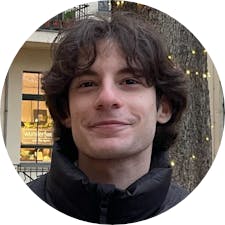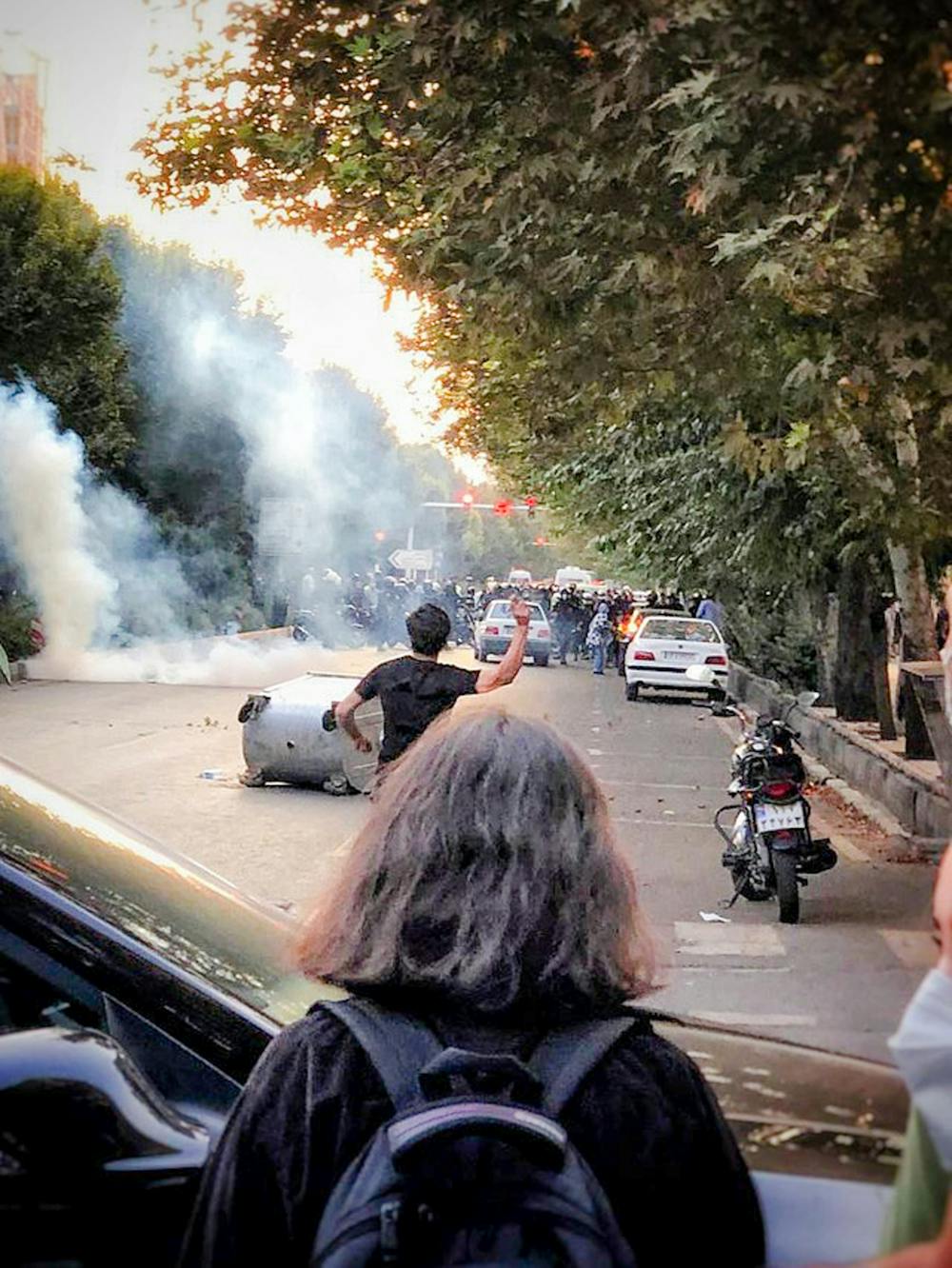Mahsa Amini was 22 years old when Tehran’s Guidance Patrol — a dedicated morality police established by the Islamic Republic of Iran that enforces strict dress codes for women — apprehended her for improper dress and drove her to a detention center for re-education.
Mahsa Amini was 22 years old when — just two hours after her arrest — she fell into a coma and was transferred from the police station to a hospital. Two days later, she died from a heart attack, despite her family members’ claims that she did not have any pre-existing conditions. The Iranian government has since released edited footage of Amini at the police station, raising suspicion that she was abused by authorities before going to the hospital.
Mahsa Amini was 22 years old when her death sparked protests across Iran championing women's rights.
“These protests have not only crossed lines in terms of provinces in areas of Iran, but class lines,” said Manijeh Nasrabadi, assistant professor of women’s, gender and sexuality studies at Barnard College, during an event entitled “Iran Protests: Gender, Body Politics and Authoritarianism” co-hosted by the Watson Institute for International and Public Affairs and the Center for Middle East Studies.
“They have brought out the religiously devout people as well as more secular people,” Nasrabadi said. “There’s this deep, embodied sense that the killing of Amini could happen to any woman, any day. And people are just not willing to continue to live like that under daily fear.”
Protests began Sept. 17 at Amini’s funeral in Iran’s Kurdistan Province and have since spread across the country and the globe. Led largely by women, these demonstrations have included women going out in public without hijabs, burning their veils and publicly cutting their hair as symbols of defiance against the government’s veiling mandate. Recent estimates suggest that around 133 people have been killed as a result of government retaliation against these protests.
“The protests need to be understood, not only in reaction to the death of a young woman, … but also in reaction to the attempted cover-up by the government,” said Nadje Al-Ali, director of Middle East studies. “Instead of the government coming out and saying, ‘Oh, we don't know what happened, we need to investigate,’ … (there was) total denial.”
These protests “are infused with the mood of younger generations who have no ideological attachment to the government,” Nasrabadi said. “There is an overwhelming rejection … (of) a system that is really not working. It’s not working economically, it’s not working socially (and) it’s not working politically.”
“A lot of parents and grandparents got to see what Iran was like at its peak, when it was actually (a) society worth living in,” said R., an Iranian-born undergraduate student who requested anonymity due to safety concerns. Since the end of the Iranian Revolution in 1979, the country has been an Islamic republic.
The younger generation did not see that peak, R. added. “It lights a fire in them. … They want that chance at the kind of life that their grandparents had long before.”
While so far the protests have been brought together without set leadership, Al-Ali believes the government is worried that the protests will become a more coherent and focused movement.
“The government is not just standing still,” she said. “They are reacting. They feel very threatened.”
One of the major ways that the government is stifling protests — especially to stop them from reaching global audiences — is by blocking internet access due to the major role social media has played in organizing protests.
“I don’t know much about my family (in Iran) because the internet has been cut off and we have basically no means of communication,” said Mateen Markzar ’26, whose family is from Iran. The country is “like a black hole, and you don't know what's going on there.”
The government has also carried out deadly missile and drone strikes in northern Iraq, targeting the headquarters of three Iranian Kurdish opposition parties who are supporting the ongoing protests. Most recently, Iranian security forces beat, shot and detained students of Tehran’s Sharif University, who began protesting against the Iranian regime by refusing to attend class.
While protests in Iran are nothing new — for example, the 2009 Green Movement — Nasrabadi believes that this is the first time where women’s issues are at the center of national demonstrations.
“The current uprising really does inherit the legacies of all the past mobilizations, but it also moves in some really distinct new directions,” she said.
“People are protesting against the mandatory wearing of the veil, but also protesting against the so-called morality police controlling women's dress codes and arresting and punishing women,” Al-Ali added. “This issue of women's rights is not seen anymore to be a side issue, but is recognized (as being) at the heart of a wider critique of the Islamic Republic. … They're actually challenging … the regime.”
Al-Ali pointed to the severe economic sanctions placed on Iran by countries like the United States as motivating additional civilian unrest. But she also encouraged people to consider how the sanctions themselves have worsened conditions for Iranian women and how lobbying for lifting sanctions could play a crucial role in providing them support.
In times of economic crisis, women suffer disproportionately from unemployment and “a lack of access to resources, whether it’s healthcare or childcare,” she said. “Women are at the forefront of experiencing poverty.”
Al-Ali hopes that the protests, at the very least, force the Iranian government to lessen some of the extreme crackdowns on the mandatory nature of veiling and control of women’s dress. More substantially, she hopes these protests open up political spaces to have less patriarchal, authoritarian regimes.
“Revolutions are not made from one day to the next,” she said. Still, “it's clear that there is this large percentage of the population who are not happy with the way things are.”
Nasrabadi encouraged all those made aware of the conflict, especially students at the University, to sign solidarity statements pressuring departments and administrators to condemn the violence in Iran. “We can really use our voices here to shine a light for the whole world to see what’s happening,” she said.
“These women are literally putting their lives on the line to fight for things that they believe in, and I wish there was more than I could do here,” Markzar said. Markzar is trying to “increase awareness for what is going on” among his peers by posting to social media, hoping to supplement limited media coverage.
Al-Ali also warned people to avoid succumbing to Islamophobic “stereotypes about ‘poor, oppressed women’” which reify the idea that the hijab is a problem.
R. believes that the Islamic Republic of Iran itself is not a representation of true Islam.
“My grandma says the least Islamic thing she knows is the Islamic Republic of Iran,” R. said, explaining that Iranian women are just fighting for the option to choose whether or not they want to wear a hijab.
“I’m glad that people are taking notice (of the protests) – just remember that it’s nothing new,” R. added. “There’s so many women that we need to remember that died just like Amini did” and “were never noticed.”
“This is a fight for survival,” Markzar said. “It’s a fight for freedom.”

Alex Nadirashvili was the managing editor of multimedia and social media for The Brown Daily Herald's 133rd Editorial Board. As a former University News editor, he covered faculty, higher education and student life, though his proudest legacy is The Brown Daily Herald TikTok account.





